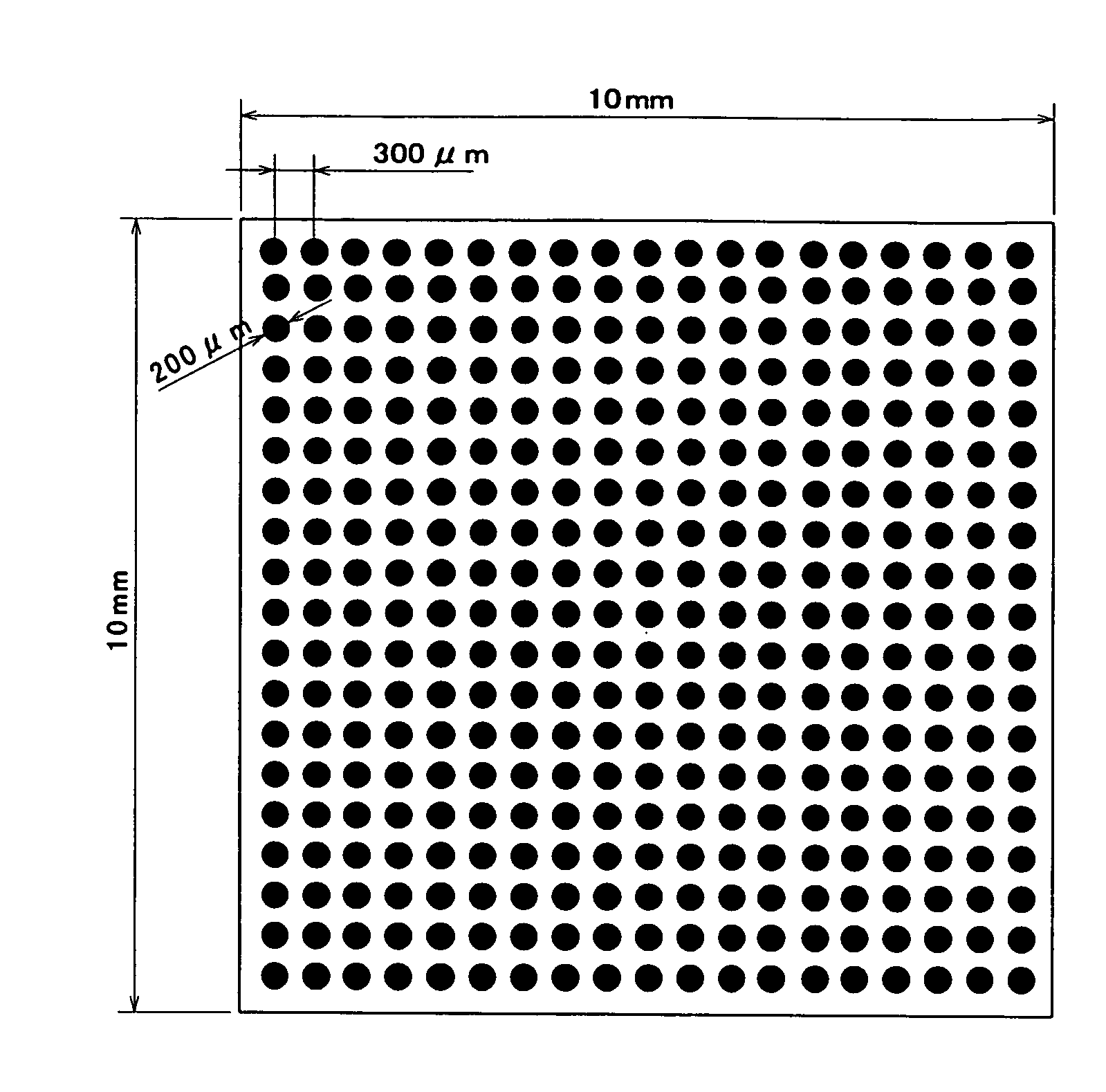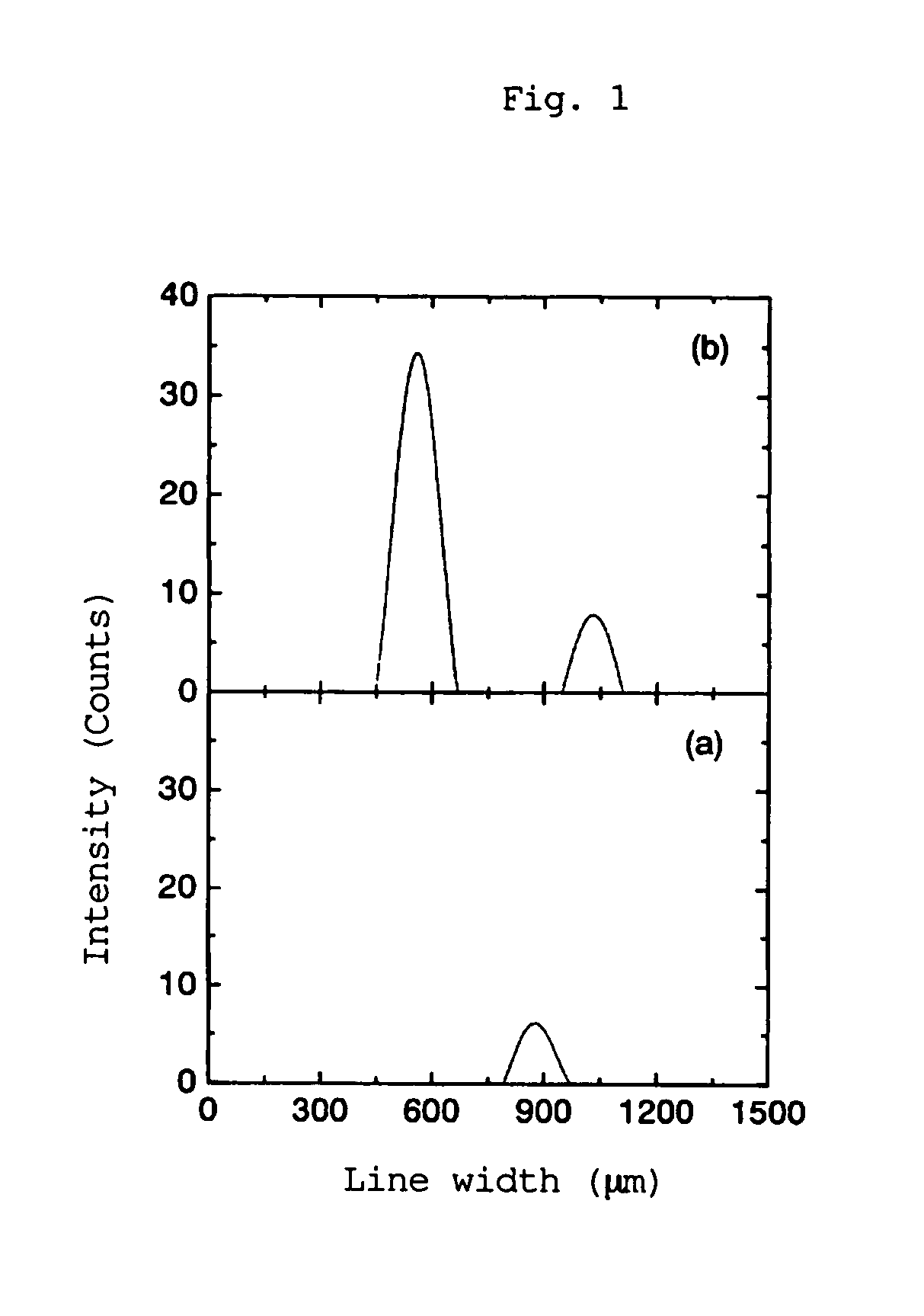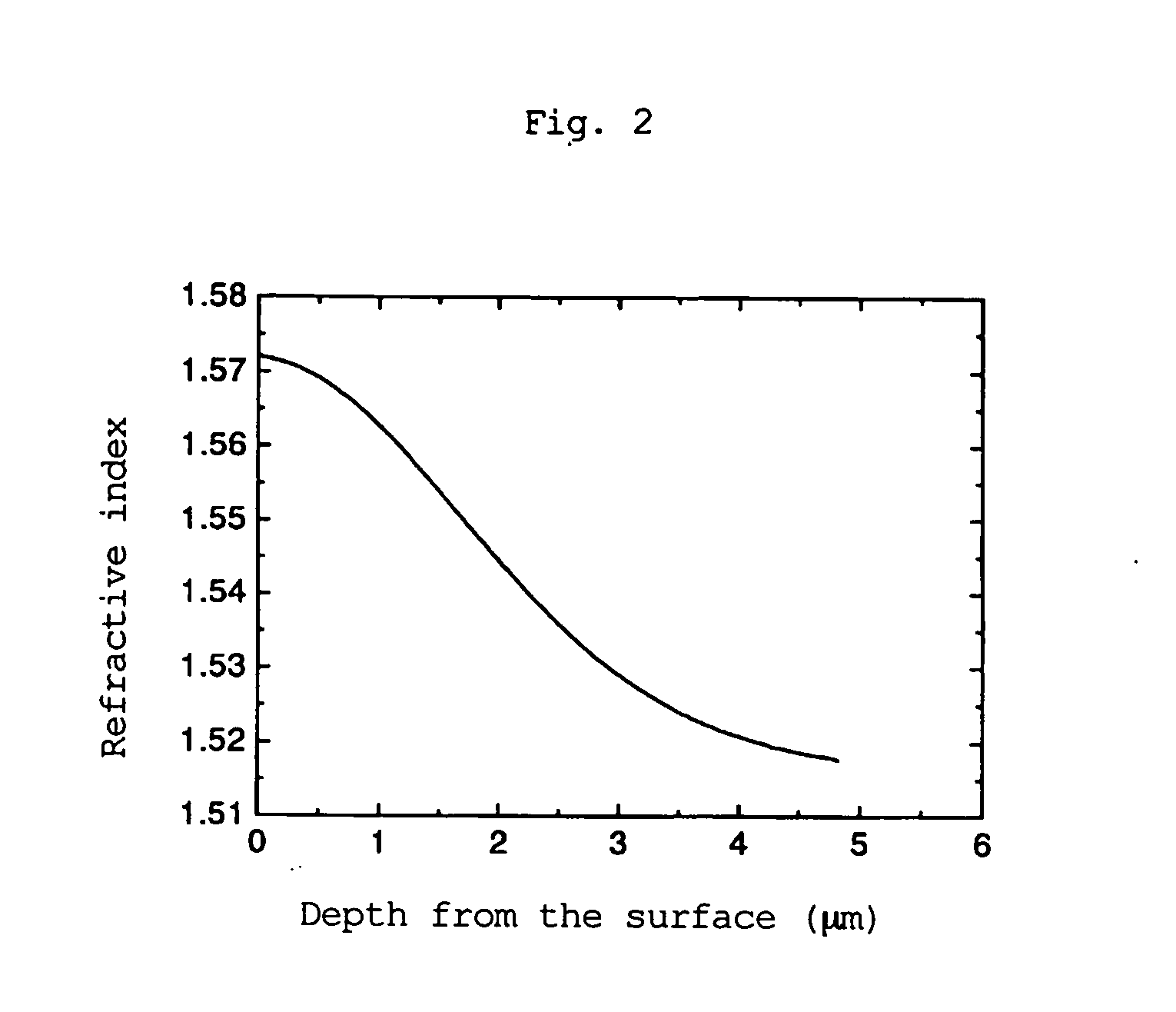Process for Producing Optical Device
a technology of optical elements and production processes, applied in the direction of cladding optical fibres, manufacturing tools, instruments, etc., can solve the problems of increased costs, internal stress on the substrate, and high cost, and achieve the effect of not having a complicated production process
- Summary
- Abstract
- Description
- Claims
- Application Information
AI Technical Summary
Benefits of technology
Problems solved by technology
Method used
Image
Examples
example 1
Production of a Graded Refractive Index Y-Shaped Optical Waveguide
[0069]Using a commercially available SiO2—B2O3—Na2O borosilicate glass (product number: BK7, manufactured by Schott) as a substrate (20 mm long×20 mm wide×3 mm thick), an optical waveguide was formed according to the following method.
[0070]The glass substrate was first washed and then a paste of 25% by weight of AgNO3, 40% by weight of NaNO3, 15% by weight of acrylic resin, 15% by weight of cellulose resin, and 5% by weight of terpineol (the paste being prepared by mixing 20 parts by weight of organic solvent, 120 parts by weight of resin component, and 160 parts by weight of additive per 100 parts by weight of silver compound) was applied by screenprinting to one side of the glass substrate to form a Y shape (line width: 100 μm) to a thickness of 1 mm.
[0071]Subsequently, the pasted glass substrate was dried at 200° C. for 1 hour and then heat-treated in air at 300° C. for 3 hours.
[0072]The silver distribution in the ...
example 2
Production of a Graded Refractive Index Microlens
[0075]Using a commercially available SiO2—CaO—Na2O silicate glass (product number: B270, manufactured by Schott) as a substrate (20 mm long×20 mm wide×3 mm thick), a microlens was formed according to the following method.
[0076]The glass substrate was first washed and then a paste of 25% by weight of AgNO3, 40% by weight of NaNO3, 15% by weight of acrylic resin, 15% by weight of cellulose resin, and 5% by weight of terpineol (the paste being prepared by mixing 20 parts by weight of organic solvent, 120 parts by weight of resin component, and 160 parts by weight of additive per 100 parts by weight of silver compound) was applied dropwise using a syringe to one side of the glass substrate to form a circle (diameter: 400 μm) to a thickness of 1 mm.
[0077]Subsequently, the pasted glass substrate was dried at 200° C. for 1 hour and then heat-treated in air at 300° C. for 3 hours.
[0078]The silver distribution in the heat-treated sample was de...
example 3
Production of a Graded Refractive Index Microlens Array
[0080]Using a glass of 54 wt. % of SiO2, 22 wt. % of B2O3, 12 wt. % of the total weight of Li2O, Na2O and K2O, 10 wt. % of Al2O3, and 2 wt. % of ZnO as a substrate (10 mm long×10 mm wide×3 mm thick), a graded refractive index microlens array was formed according to the following method.
[0081]The glass substrate was first washed and then a paste of 25% by weight of AgNO3, 40% by weight of NaNO3, 15% by weight of acrylic resin, 15% by weight of cellulose resin, and 5% by weight of terpineol (the paste being prepared by mixing 20 parts by weight of organic solvent, 120 parts by weight of resin component, and 160 parts by weight of additive per 100 parts by weight of silver compound) was applied dropwise using a dispensing pipette to one side of the glass substrate to form 20 by 20 circles (diameter: 200 μm, total 400 dots) with a patterning interval (distance from the center of one circle to the center of the adjacent circle) of 30...
PUM
| Property | Measurement | Unit |
|---|---|---|
| Percent by mass | aaaaa | aaaaa |
| Temperature | aaaaa | aaaaa |
| Weight | aaaaa | aaaaa |
Abstract
Description
Claims
Application Information
 Login to View More
Login to View More - R&D
- Intellectual Property
- Life Sciences
- Materials
- Tech Scout
- Unparalleled Data Quality
- Higher Quality Content
- 60% Fewer Hallucinations
Browse by: Latest US Patents, China's latest patents, Technical Efficacy Thesaurus, Application Domain, Technology Topic, Popular Technical Reports.
© 2025 PatSnap. All rights reserved.Legal|Privacy policy|Modern Slavery Act Transparency Statement|Sitemap|About US| Contact US: help@patsnap.com



